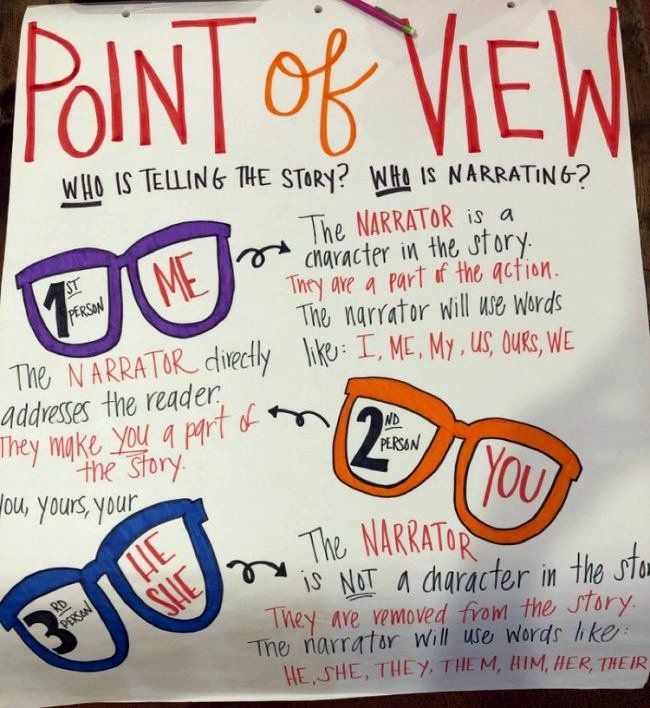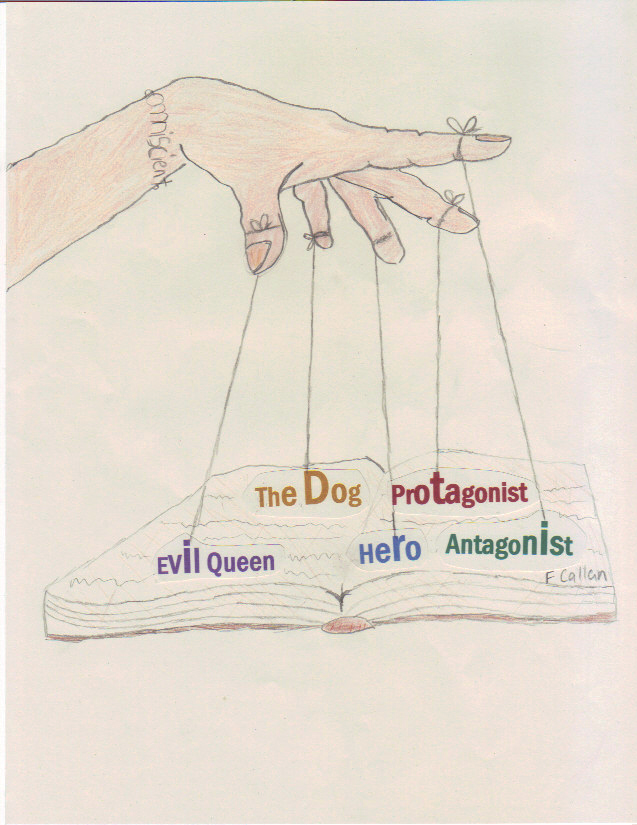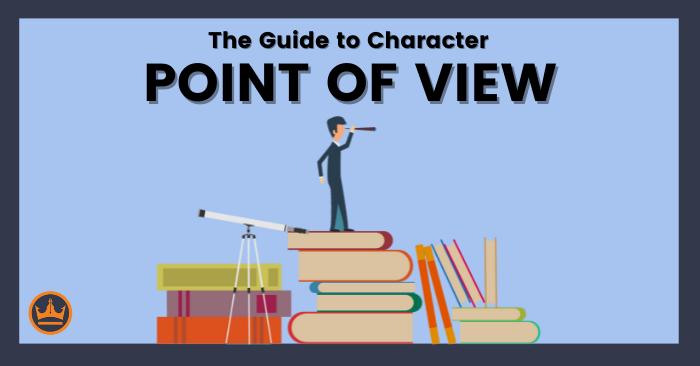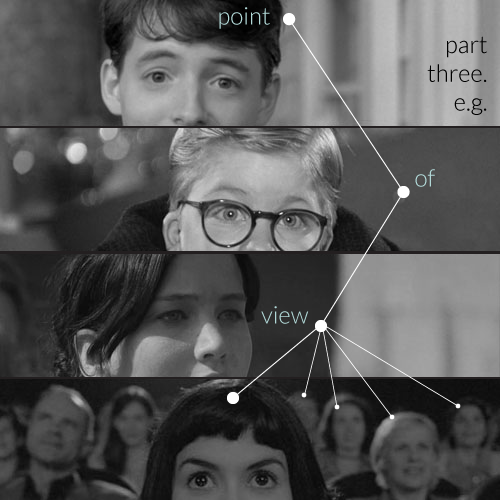 Our April Round Robin Blog Hop asks the question: What is your favorite point of view to write or read and why?
Our April Round Robin Blog Hop asks the question: What is your favorite point of view to write or read and why?
What advantages might 1st person, 3rd person limited or 3rd person omniscient POVs have? What disadvantages?
XX
Point of View is a critical piece of all writing, fiction and non-fiction. The only time I’ve see 2nd person POV, however is in instructions. As in: First you want to remove the cover, then you will see . . . Sometimes I guess it might appear in things like travel guides. “Be sure you don’t miss walking right up to the protective fence and looking down into the Grand Canyon to get the full effect.” Or, “If you arrive after dark, be sure you get the correct camp site. There will be numbers at each site . . .” Most non-fiction is in 3rd person, but fiction can be in 1st, 3rd limited or 3rd person omniscient. In other words, WHO is telling the story? What are the advantages and disadvantages of each?
XX
 I’m going to start with 3rd person Omniscient because it’s my least favorite. Here we have a narrator telling the story. The only advantage is that the author and reader can see into other heads and know what all the characters are thinking. Like God, way above the fray but looking down and knowing what everyone is doing at the same time. But the downside to this is that it distances the reader from the characters because it removes the immediacy of emotion. The reader is not looking at the world through the eyes of any specific character, thus the reader never gets close to the character. Another disadvantage is that it takes away some of the suspense. If the reader knows what everyone is up to, it removes the unknown and takes away some of the adventure and suspense. Another thing that authors who write in omniscient point of view tend to do is use phrases like, “little did he know . . .” or “It would be the last thing he ever saw.” Now the surprise is totally taken out of the picture because the reader already knows what’s coming next. No need to dive right into the next chapter because the there’s no suspense left. 3rd person Omniscient is very like the difference between SHOWING the reader what’s happening and TELLING them. Telling is less immediate. Less emotional. I’m old enough that I remember when news reporters told us the news without a slant. I had NO idea Walter Cronkite had a liberal point of view because he just told us what happened. No embellishment, no emotion, no opinion. Just the facts.
I’m going to start with 3rd person Omniscient because it’s my least favorite. Here we have a narrator telling the story. The only advantage is that the author and reader can see into other heads and know what all the characters are thinking. Like God, way above the fray but looking down and knowing what everyone is doing at the same time. But the downside to this is that it distances the reader from the characters because it removes the immediacy of emotion. The reader is not looking at the world through the eyes of any specific character, thus the reader never gets close to the character. Another disadvantage is that it takes away some of the suspense. If the reader knows what everyone is up to, it removes the unknown and takes away some of the adventure and suspense. Another thing that authors who write in omniscient point of view tend to do is use phrases like, “little did he know . . .” or “It would be the last thing he ever saw.” Now the surprise is totally taken out of the picture because the reader already knows what’s coming next. No need to dive right into the next chapter because the there’s no suspense left. 3rd person Omniscient is very like the difference between SHOWING the reader what’s happening and TELLING them. Telling is less immediate. Less emotional. I’m old enough that I remember when news reporters told us the news without a slant. I had NO idea Walter Cronkite had a liberal point of view because he just told us what happened. No embellishment, no emotion, no opinion. Just the facts.
XX
 Often an author will show more than one character’s POVs in different chapters or scenes – this isn’t what 3rd person omniscient is. Let’s suppose the story is told first from Joe’s point of view, where he is eager to propose to Mary. He’s wearing her favorite shirt and putting on cologne which he usually doesn’t wear, so the reader senses how important this is for him and can’t wait for her to say yes. But then the author lets the reader into Mary’s head and she’s trying to figure out how to let Joe down easy, or she’s thinking of a different man and now the reader is heartbroken for Joe and wondering how this is going to work out. Or maybe the reader understands that Mary is sorry she knows she’s going to hurt him, but she just doesn’t love him that way. Seeing this issue from inside the two main characters’ heads puts the reader right there, feeling what they are feeling and closer than someone like God telling it from above. This distance is why I personally don’t enjoy either writing or reading in omniscient. I want to be in love, feel fear, triumph, sadness etc. I want to be IN the head and heart of the character. I want to be as surprised by what’s coming next as the character is.
Often an author will show more than one character’s POVs in different chapters or scenes – this isn’t what 3rd person omniscient is. Let’s suppose the story is told first from Joe’s point of view, where he is eager to propose to Mary. He’s wearing her favorite shirt and putting on cologne which he usually doesn’t wear, so the reader senses how important this is for him and can’t wait for her to say yes. But then the author lets the reader into Mary’s head and she’s trying to figure out how to let Joe down easy, or she’s thinking of a different man and now the reader is heartbroken for Joe and wondering how this is going to work out. Or maybe the reader understands that Mary is sorry she knows she’s going to hurt him, but she just doesn’t love him that way. Seeing this issue from inside the two main characters’ heads puts the reader right there, feeling what they are feeling and closer than someone like God telling it from above. This distance is why I personally don’t enjoy either writing or reading in omniscient. I want to be in love, feel fear, triumph, sadness etc. I want to be IN the head and heart of the character. I want to be as surprised by what’s coming next as the character is.
XX
 So, that leaves us with 3rd person limited and 1st person. Most writers seem to prefer 3rd person limited. Limited simply means you tell only one point of view at a time, but from the character’s level rather than the narrator who sees all. You can only see, think, feel or hear what that character is seeing, thinking, feeling or hearing. That’s 3rd person limited. Now the text would read: Joe put on Mary’s favorite shirt. She always told him his blue eyes looked bluer with that shirt and tonight he needed everything on his side. He added after shave that he thought she might like and took one last look at himself in the mirror. “Okay,” he said to himself. “Time to get it done.”
So, that leaves us with 3rd person limited and 1st person. Most writers seem to prefer 3rd person limited. Limited simply means you tell only one point of view at a time, but from the character’s level rather than the narrator who sees all. You can only see, think, feel or hear what that character is seeing, thinking, feeling or hearing. That’s 3rd person limited. Now the text would read: Joe put on Mary’s favorite shirt. She always told him his blue eyes looked bluer with that shirt and tonight he needed everything on his side. He added after shave that he thought she might like and took one last look at himself in the mirror. “Okay,” he said to himself. “Time to get it done.”
XX
In 1st person this might read: I put on the blue shirt that Mary always told me made my eyes look bluer. I figured she just liked blue shirts, but tonight I hope it’s because she loves my blue eyes. I’d loved that woman from the moment I met her, and I pray she feels the same. I dabbed on some aftershave I thought she’d like too and gave my reflection one last check in the mirror. “Okay,” I muttered. “Time to get it done.” So, maybe I did add a bit more emotion here, but the reader gets the idea – Joe is going to be heartbroken if she doesn’t say yes, and they are as invested in her answer as he is. Even if the author never lets you into Mary’s point of view, there’s a bit of suspense here.
XX
 I enjoy reading both 3rd person limited and 1st, but if I have a favorite, I’d have to admit to liking 1st person best. It feels more immediate. I AM that character, feeling, seeing, experiencing all the things the character is feeling, seeing and experiencing. But that’s just me and 3rd person limited can draw the reader in just as firmly. The biggest disadvantage of 1st person is that you never get into the head of other characters (in most cases – more about that later.) It takes a really skilled writer to let the reader think and feel what non point of view characters are feeling, or thinking. One my all-time favorite books (long before the series on Starz and who doesn’t love Sam Heughan?) is Outlander. Diana Gabaldon told that story in the first book of the series entirely in 1st person from Claire’s point of view, but she was a master at revealing Jamie’s thoughts and emotions via ‘tells’ that Claire grew to know well. He had a habit of tapping a finger against his thigh when he was agitated or in disagreement for example. And the dialog also revealed much of what was going on in his head. As the series got longer and the cast of characters longer Gabaldon began to add other points of view, but that first book was a master of how to write 1st person and still let the reader in on other character’s feelings, experience and thoughts.
I enjoy reading both 3rd person limited and 1st, but if I have a favorite, I’d have to admit to liking 1st person best. It feels more immediate. I AM that character, feeling, seeing, experiencing all the things the character is feeling, seeing and experiencing. But that’s just me and 3rd person limited can draw the reader in just as firmly. The biggest disadvantage of 1st person is that you never get into the head of other characters (in most cases – more about that later.) It takes a really skilled writer to let the reader think and feel what non point of view characters are feeling, or thinking. One my all-time favorite books (long before the series on Starz and who doesn’t love Sam Heughan?) is Outlander. Diana Gabaldon told that story in the first book of the series entirely in 1st person from Claire’s point of view, but she was a master at revealing Jamie’s thoughts and emotions via ‘tells’ that Claire grew to know well. He had a habit of tapping a finger against his thigh when he was agitated or in disagreement for example. And the dialog also revealed much of what was going on in his head. As the series got longer and the cast of characters longer Gabaldon began to add other points of view, but that first book was a master of how to write 1st person and still let the reader in on other character’s feelings, experience and thoughts.
X
 3rd Person limited Point of view is the more common option and perhaps a little easier to write. And, well done can draw the reader in just as firmly as 1st person does, but for all the point of view characters, not just the main character. The disadvantage here, is actually less a disadvantage as a pitfall new writers often fall into – Head-hopping. Most authors change points of view when a scene or chapter changes and stay in that person’s head for the duration. About the only time this really needs to switch is if it’s a romance. And then only in a really critical scene like the first time they make love. The reader is eager to know how both parties are reacting to this life changing event, but it has to be done carefully so the reader is pulled into the other head without realizing it. If the change is abrupt or feels wrong, the reader will be scratching their head and stopping to go back and see who was feeling, or thinking this particular emotion or thought. Head-hopping, the pitfall, is when the author constantly jumps from one head to the other and the reader is never sure who’s thinking or feeling what. It jerks the reader out of the story trying to figure it out. And jerking the reader out of the story is never good. It also tends to distance the reader from either character much like 3rd person omniscient does. Head hopping is not just thought or emotion, but also action.
3rd Person limited Point of view is the more common option and perhaps a little easier to write. And, well done can draw the reader in just as firmly as 1st person does, but for all the point of view characters, not just the main character. The disadvantage here, is actually less a disadvantage as a pitfall new writers often fall into – Head-hopping. Most authors change points of view when a scene or chapter changes and stay in that person’s head for the duration. About the only time this really needs to switch is if it’s a romance. And then only in a really critical scene like the first time they make love. The reader is eager to know how both parties are reacting to this life changing event, but it has to be done carefully so the reader is pulled into the other head without realizing it. If the change is abrupt or feels wrong, the reader will be scratching their head and stopping to go back and see who was feeling, or thinking this particular emotion or thought. Head-hopping, the pitfall, is when the author constantly jumps from one head to the other and the reader is never sure who’s thinking or feeling what. It jerks the reader out of the story trying to figure it out. And jerking the reader out of the story is never good. It also tends to distance the reader from either character much like 3rd person omniscient does. Head hopping is not just thought or emotion, but also action.
XX
 Example: Joe went down on one knee in spite of the old football injury that still hurt sometimes. This is how it’s supposed to be done, and he was determined to do it right. Crunch time. How to say this without sounding trite?” Mary sighed, not sure how to break it to this man kneeling in front of her. “Will you marry me?” His hopeful look said it all. Joe’s heart thundered in his ears. Amazing that Mary couldn’t hear it trying to pound its way out of his chest.
Example: Joe went down on one knee in spite of the old football injury that still hurt sometimes. This is how it’s supposed to be done, and he was determined to do it right. Crunch time. How to say this without sounding trite?” Mary sighed, not sure how to break it to this man kneeling in front of her. “Will you marry me?” His hopeful look said it all. Joe’s heart thundered in his ears. Amazing that Mary couldn’t hear it trying to pound its way out of his chest.
XX
In this paragraph we start in Joe’s POV, and then hop to Mary’s, then back to Joe, to Mary and finally back to Joe. The comment, how to say this without sounding trite could have been either Joe or Mary, but I wrote it as Mary trying to rehearse in her head how to say no without sounding trite. Then Joe asks her to marry him. Definitely Joe’s line and should have been in a new paragraph to start with. But there’s no way Joe can see his own face so the next line ‘His hopeful look . . .” is in Mary’s POV. Then we are back in Joe’s head experiencing his angst with his heart pounding. All this back and forth leaves the reader confused about who’s thinking or feeling what and stopping to read back to see if they can orient themselves again. Pulling the reader from the story, as I mentioned before, is the last thing an author wants to do.
XX
 One last thing I’d like to add before sending you off to see what other authors think about the whole Point of View question. There are a few writers who have done both 1st and 3rd limited in the same story. I just recently tried it with the first book in my new series. A whole new challenge but I was happy with the result. I’m sure when I sit down to start my first round of edits I’ll find a raft of mistakes, but that’s what edits and rewrites are for. In this novel, I have two stories being told. The first is in the present day and my heroine is my main character. I’ve told her part in 1st person. The other main character in the present time is Sam. (It is a romance so there is a hero of course.) I’ve told his chapters Sam’s 3rd person limited point of view. The second story is historic and told partly from the heroine’s point of view in 3rd person limited and partly through the letters sent home to her from the hero who is fighting in Europe in WWII. I preface every chapter with a heading. Kenzie – Present Day, Sam – Present Day or Hannah 1943 (44, 45 and 46) In this way the reader knows right at the start whose point of view they are seeing this chapter from and I don’t deviate, so I never lose the reader along the way. Telling two stories in two eras necessitated me having a chapter heading to orient the reader anyway.
One last thing I’d like to add before sending you off to see what other authors think about the whole Point of View question. There are a few writers who have done both 1st and 3rd limited in the same story. I just recently tried it with the first book in my new series. A whole new challenge but I was happy with the result. I’m sure when I sit down to start my first round of edits I’ll find a raft of mistakes, but that’s what edits and rewrites are for. In this novel, I have two stories being told. The first is in the present day and my heroine is my main character. I’ve told her part in 1st person. The other main character in the present time is Sam. (It is a romance so there is a hero of course.) I’ve told his chapters Sam’s 3rd person limited point of view. The second story is historic and told partly from the heroine’s point of view in 3rd person limited and partly through the letters sent home to her from the hero who is fighting in Europe in WWII. I preface every chapter with a heading. Kenzie – Present Day, Sam – Present Day or Hannah 1943 (44, 45 and 46) In this way the reader knows right at the start whose point of view they are seeing this chapter from and I don’t deviate, so I never lose the reader along the way. Telling two stories in two eras necessitated me having a chapter heading to orient the reader anyway.
X
Now I’m going to send you off to see what my Round Robin Blog Hoppers offer on the subject.
X
Bob Rich -
Connie Vines
Diane Bator
Helena Fairfax
Victoria Chatham